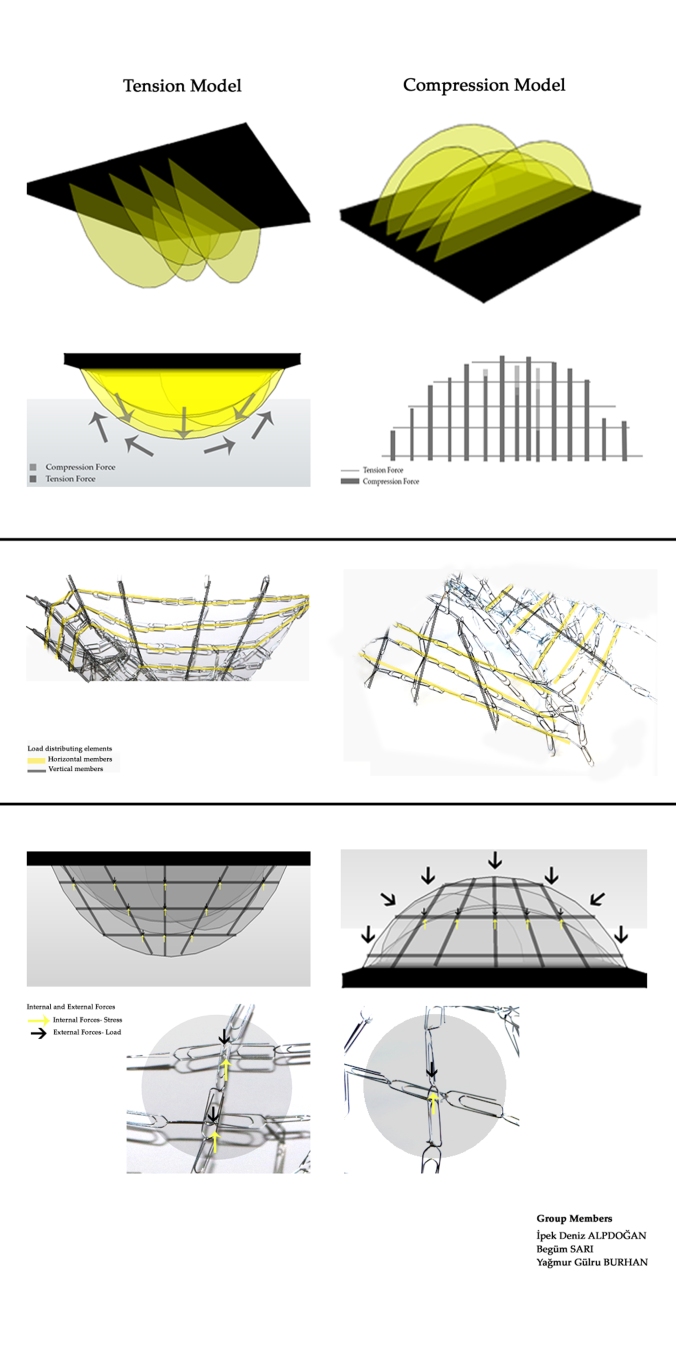I produced the model to show a part, that goes lake to the land, of my pier and its structure in a scale of 1/10. Wood generates the pier and its structure so I used balsa wood for the model construction. My design consists of units. Therefore, I combined all of them with dowel joint technique.
The width of the pier is two meters. To reinforce its lateral stability and to decrease the units’ bending forces, I introduced beams and they also helped the distribution of load through the beams equally in the structure.
Elements that create enclosure and define a space in the pier also work as a structural frame that help again the distribution of load and increase the lateral stability.
Since the vertical elements are very long, horizontal structure of the pier supported them and it decreased the buckling condition when loads come to the vertical elements. Also, horizontal elements that create enclosure are supported with vertical elements. They distributed the load that come from horizontal elements and decrease the bending force of it.










